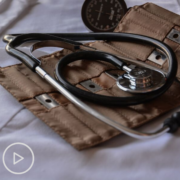Misconceptions in Clinical Trials: What’s Fact and What’s Fiction?
AML expert, Dr. Jessica Altman, addresses common misconceptions patients have about clinical trials regarding treatments, regulations, and standards of care. Want to learn more? Download the Program Resource Guide here.
Dr. Jessica Altman is Director of the Acute Leukemia Program at Robert H. Lurie Comprehensive Cancer Center of Northwestern University. More about Dr. Altman here.
See More From The Fact or Fiction? AML Series
Related Resources

|

|

|
Transcript:
Patricia:
What about clinical trials? What common misconceptions do patients have about enrolling in trials?
Dr. Altman:
So, I think the misconceptions regarding clinical trials can be very masked. And I think it really depends on the intent of a clinical trial and the phase of the clinical trial. I think that a well-designed clinical trial is almost always the right choice for a patient with acute leukemia at any stage in their therapy.
That is a bias as a clinical trialist. I think it’s the right bias, but it is still my bias. I think patients frequently worry that they’re being treated as a guinea pig, or they’re not getting an appropriate treatment. What I can tell you is the clinical trials that we and my colleagues across the country and across the world participate in are clinical trials where the patients are getting at least what we consider a standard of care for that phase of their disease, and they may be getting something in addition to that or something that is slightly different, but expected to have a similar response rate.
We have this phrase in clinical trials, something called equipoise, that if there’s a randomization between options that we need to feel, as the practitioner and as the clinical trialist, that each option is at least as good as the other.
Patricia:
That kind of goes back to the vetting of treatments before they go to a clinical trial. Tell me a little bit about history. How can we make patients feel more comfortable?
Dr. Altman:
I want to make sure that I understand the question.
Patricia:
So, how thoroughly are treatments vetted before they go to a clinical trial?
Dr. Altman:
Great. So, the way that agents get into early phase clinical trials and then later phase studies are these are compounds that have been studied in the laboratory, then studied in small animals, then larger animals. And then, frequently, a drug is started in a patient with relapsed and refractory Acute Myeloid Leukemia and found to be safe – that’s what we call a Phase I study.
Once we know the right dose and the associated side effects from an early phase clinical trial, later phase studies – i.e. Phase II, where the goal is to determine the efficacy and response rate is conducted. And then, if that appears and looks like it’s promising, a larger, randomized, three-phase study is frequently conducted, where we compare a standard of care to the new approach.
Patricia:
So, patients should be comfortable that the clinical trial that they’re going through has been thoroughly vetted, has gone through multiple stages before human trials occur?
Dr. Altman:
That is accurate in terms of compounds get through animal studies, and then depending on the way that the trial is being connected, will then be studied in patients either with relapsed or refractory disease or very high-risk disease. But it’s also very important to mention that these pharmaceutical companies and physicians are not making these decisions alone.
The clinical trials are all reviewed by scientific review committees through the cancer centers, which are other investigators making sure that everything appears appropriate. In addition, there are institutional review boards at every university whose goal it is to keep patients and research subjects in well-done clinical trials safe. That is their primary goal. And the IRBs – institutional review boards – are very involved with making sure that clinical trials are appropriate and that the conduct of clinical trials is appropriate.










